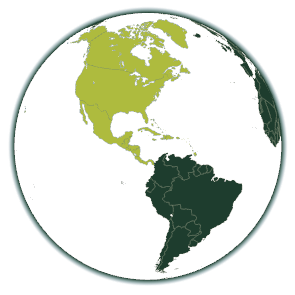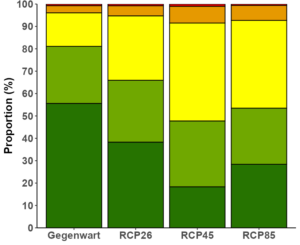Parthenocissus inserta
Thicket Creeper
Parthenocissus inserta is a fast-growing, deciduous climber that originates from North America. The plant has leaflets consisting of five individual, toothed leaves. The leaves turn bright red in autumn. Parthenocissus inserta is known for its remarkable climbing ability. It can grow on almost any surface, including walls, fences and even other plants, thanks to sticky adhesive discs at the end of the tendrils. The plant produces small, inconspicuous green flowers in late summer that are pollinated by insects. These flowers develop into small, blue-black berries that are eaten by birds, which helps to spread the plant. In many regions the plant is valued as an ornamental, but under certain conditions it can become invasive as it grows quickly and can suppress native plants.
Types of damage
Region of origin
North America

Introduction vectors
Current distribution
Based on the FlorKart Database of the Federal Agency for Nature Conservation, as of 2013
Miscellaneous
Dispersion forecast
Indicates the proportion of land suitable for habitat under current and future climate conditions (2060-2080) under three emission scenarios (RCP26, RCP45 & RCP85).

Habitat suitability under current climate conditions
These habitat suitability maps show for Parthenocissus inserta where suitable habitat conditions exist.
The map on the left shows this for current climate conditions. Below this are maps for the time classes 2040-2060 and 2061-2080, in which three different emission scenarios can be selected.
The slider at the top left allows you to adjust the opacity of the map to make orientation easier.
By clicking on the respective quadrant, information on the environmental conditions present in it can be called up.
The methodology is explained here .












